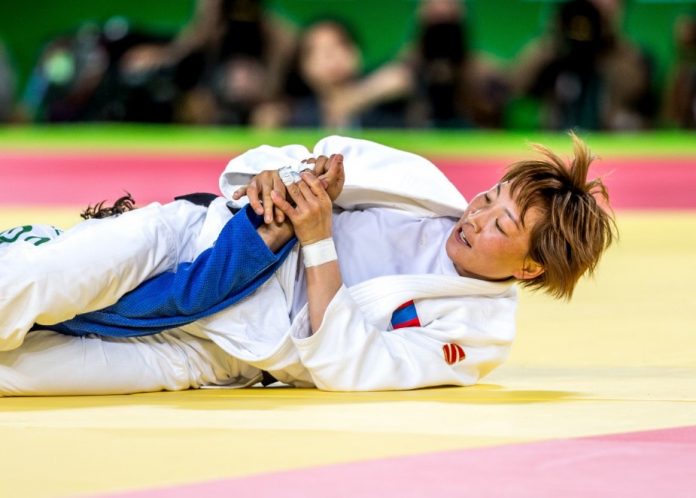
Due to the sheer volume of different disciplines, deciding which martial art to learn can often be a difficult decision, especially if you’ve never been exposed to a variety of styles the world has to offer.
With this in mind, we’re going to take a closer look as to why BJJ is the perfect martial art for women, exploring what BJJ involves and how you can get started.
What is BJJ?
Before we begin to look at some of the reasons why BJJ may be the best martial art for
women, lets’ take a look at a brief history of BJJ and what it entails.
The origins of BJJ can be traced back to the 1920s, where a world-renowned Japanese
Judoka and Jiu-Jitsu practitioners named Mitsuyo Maeda settled in Brazil. Here he opened
up his own Jiu-Jitsu academy, with one of his first students being a man named Carlos
Gracie (this is actually being turned into a Netflix film).
After a number of years studying with Maeda, Carlos and his brothers soon opened up their
own school, teaching an adapted version of Jiu-Jitsu, which many people would call the birth of BJJ (Brazilian Jiu Jitsu).
Here they created the Gracie Challenge, where the family would accept no-holds-barred
matches from anyone of any discipline. This, in turn, allowed for them to develop BJJ into a discipline that was able to rule supreme over many others, including striking based martial arts.
Now we know how one of the worlds most popular martial arts came to fruition, let’s take a
look what BJJ involves.
BJJ is a grappling based martial, that takes place predominantly on the ground. Based on the Ne Waza aspect found in Judo, a fight is typically won by submitting your opponent via
various techniques, such as a choke or joint lock.
In competitive BJJ, if no submission is performed, the winner is determined by whoever has
accumulated the most points. Typically, the point system is as followed:
- Takedown or Throw = 2 points
- Sweep = 2 points
- Pass opponent’s guard = 3 points
- Mounted position = 4 points
- Back Mount with Hooks in = 4 points
- Back Mount knees on the ground, opponent flat on stomach = 4 points (Additional 4
points are scored by putting the hooks in from this position) - Body triangle from the back = 4 points
- Knee on stomach = 2 points
The Reasons Why BJJ is the Best Martial Art for Women:
Reason 1: Size Isn’t Everything
BJJ at its core is designed to allow smaller, less strong practitioners to submit potentially
stronger opponents through technique and skill. While brute strength may help some
degree, a BJJ practitioner with a higher fight IQ and a greater understanding of technique
can utilize their knowledge to outmaneuver and defeat a larger opponent.
This, in turn, makes BJJ a great candidate for women, as both men and women are able to
train together, with the winner often determined by who has the larger, more in-depth skill
set.
Having transitioned from Judo to BJJ a number of years ago, I was made aware of this first
hand. During one of my first BJJ classes, I rolled with a young woman much smaller than me and believed I would dominate the roll with my somewhat limited knowledge of BJJ, and confidence in my Judo background.
The first minute or so seemed to go well, however, beyond that things took a turn for the
worse. I was introduced to positions and techniques I had never seen before and spent
most of the time tied up in one way or another. This was an incredibly humbling experience and one in which opened my eyes to the many different levels of knowledge that BJJ practitioner’s posses.
No matter your size or shape, BJJ allows you to utilize knowledge in order to prevail.
Reason 2: One of the Most Effective Forms of Self Defense
Unfortunately, statistic shows that women are at a far greater risk of sexual assault than
men. While the best way to look after yourself is to avoid conflict at all cost, this isn’t always a possibility.
In a world where potential threats are very real, arming yourself with the knowledge to
effectively defend yourself is incredibly important. This is where BJJ comes in. There’s no
denying that BJJ is an extremely efficient method of self-defense that provides you with the
ability to neutralize an aggressor larger than yourself.
This somewhat links in nicely with my previous point in that size isn’t everything in BJJ,
which in turn makes BJJ one of the most ideal forms of self-defense, especially for women.
Reason 3: Teaches the Importance of Your Ability, Rather Than Appearance
While BJJ will undeniably help you get into shape, it will also teach you to love the body that you have. Currently, women are statistically far more likely to suffer from eating disorders than men.
Whatever the reason for this, it’s a reality of the world we live in. Fortunately, martial arts
such as BJJ teach you to appreciate your body for its capabilities, as opposed to what you
look like, or even what you wish you looked like.
Knowing you have the ability to roll for 20-minutes straight, submitting both men and
women allow you to feel a sense of self-confidence that you may never have felt if you
didn’t attend that first BJJ class.
Admittedly, this may not be a sense of instant gratification, as it’s highly unlikely you’ll be
submitting anyone in your first class, or your second, or even your third. However, when the day does come, the fulfillment and satisfaction will allow you to appreciate your capabilities, and be proud of what your body can do.
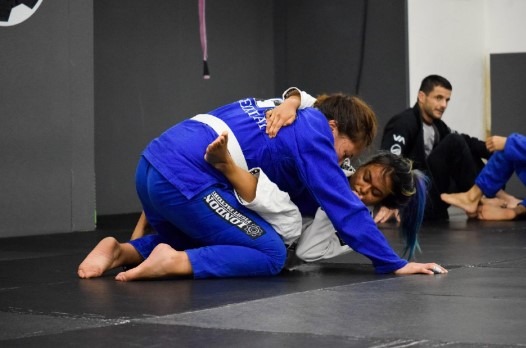
Reason 4: You Can Practice Defending Yourself in a Safe Environment
One of the greatest aspects of BJJ is how it allows you to effectively and safely spar, often
referred to as ‘rolling’. Unlike a lot of other martial arts, especially the striking disciplines,
it’s pretty difficult to fully spar without the risk of sustaining an injury.
A prime example of this is Krav Maga, which is often the primary martial art taught in self-defense classes. The only issue with this is, you can’t exactly practice striking your training
partner with a palm strike to the nose. While it may be effective in a street fight situation,
how well are you able to throw the strike, having never fully practiced it before?
BJJ, however, allows you to practice the techniques learned in class while running a pretty low risk of injury. If you’re being submitted, tap your training partner three times to let them know you concede, or verbally let them know you wish to tap.
Depending on your club, your instructor will often say to roll at 60% intensity, or 70% and so on. This again is designed to make the sparring situation safer, as you’re not trying to
instantly break your training partners arm, and are focusing more on technique, as opposed to power.
Reason 5: Create Strong Bonds with Fellow Female BJJ Practitioners
Finally, the bond you create with your fellow club members is a fantastic reason to take up
BJJ. You get to meet like-minded people, train together and learn from each other. To be
honest, it’s fairly hard not to create a bond with someone you spend so much time with,
sweat with and often fight with.
Admittedly, BJJ and many other grappling based martial arts are a fairly masculine sport and I’ve noticed a stronger bond, even kin-ship amongst female BJJ practitioners that train and roll together on the mat.
What You’ll Need to Get Started
While there are a few pieces of BJJ gear you may need, for example, a gi or a BJJ training bra, but don’t worry about it too much for your first few lessons.
I always say this whenever someone asks me about taking up a martial art, and that is to
just start. Don’t worry about what you do or don’t need, find a club near you, head down
there whenever you can and you’ll soon figure it all out.
Admittedly, it’s never nice being the new person, wearing your gym clothes whilst everyone
else is wearing their gi. Remember though, this is only for your first few lessons and your
club may even have a spare gi to lend you.
If this is something you’re worried about, you can usually find a fairly cheap women’s gi
online, or even ask to borrow one from someone at your club on your first lesson.
Whatever you do though, make sure you make the trip down to the class, as you won’t
regret it.
Final Thoughts
All in all, BJJ is a brilliant martial artist, one in which you can spend a lifetime studying and
always have more to learn. You’ll make some great friends, get in shape and be equipped
with both the knowledge and ability to effectively defend yourself.
About the Author
James is a martial arts fanatic who became National Judo Champion at the age of 12 and a
member of the Great British Judo Team, competing at an international level. Since then,
James has studied various different disciplines such as BJJ, Muay Thai, wrestling and MMA.
He spends his time blogging about different martial arts on his website MMAStation.com
and obsessing over the UFC.
Sources:
https://www.cdc.gov/ViolencePrevention/pdf/NISVS_Report2010-a.pdf


![Darce Choke Encyclopedia – Origins, Mechanics and Variations [2024] BJJ, choke, Brabo, BJJ Darce Choke, D'arce Choke, Darce BJJ Choke](https://bjj-world.com/wp-content/uploads/2017/11/JungPoirierLeeYahoo-218x150.jpg)







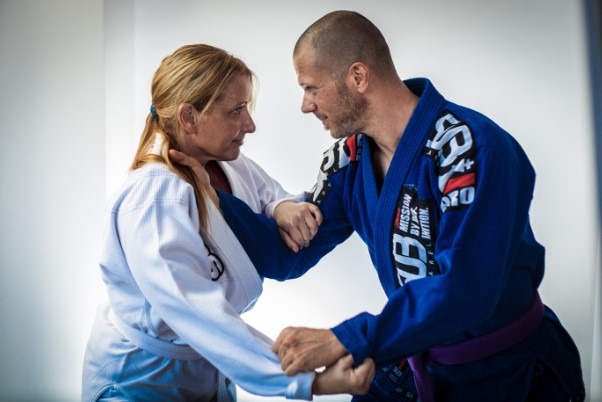
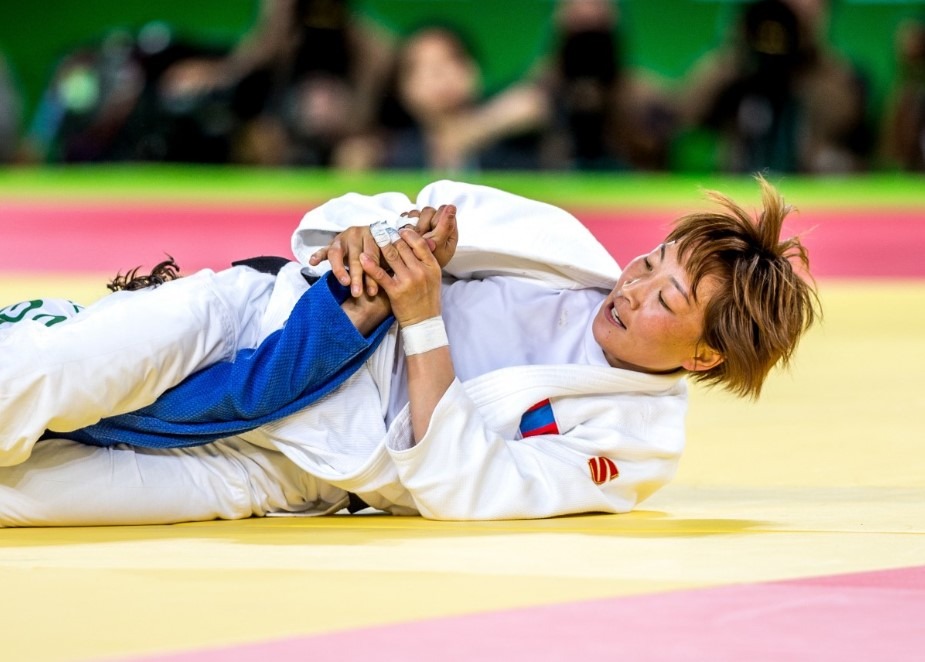

![Best Marcelo Garcia Techniques by Team Marcelo Garcia DVD Review [2025] Best Marcelo Garcia Techniques by Team Marcelo Garcia DVD Review](https://bjj-world.com/wp-content/uploads/2025/02/best-marcelo-garcia-techniques-dvd-review-218x150.png)
![Forging The De La Riva Guard Giancarlo Bodoni DVD Review [2025]](https://bjj-world.com/wp-content/uploads/2025/02/de-la-riva-guard-giancarlo-bodoni-dvd-review-218x150.png)

![Breaking Their Guard Mikey Musumeci DVD Review [2025] Breaking Their Guard Mikey Musumeci DVD Review](https://bjj-world.com/wp-content/uploads/2025/02/breaking-their-guard-mikey-musumeci-dvd-review-218x150.png)

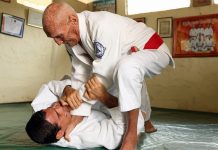


![Dynamic De La Riva Guard Otavio Sousa DVD Review [2025] Dynamic De La Riva Guard Otavio Sousa DVD Review](https://bjj-world.com/wp-content/uploads/2025/02/dynamic-de-la-riva-guard-otavio-sousa-dvd-review-100x70.png)
![Mastering The Crucifix Alexandre Pereira DVD Review [2025] Mastering The Crucifix Alexandre Pereira DVD Review](https://bjj-world.com/wp-content/uploads/2025/01/mastering-the-crucifix-alexandre-pereira-dvd-review-100x70.png)
![Grappling Takedown Dominance Brandon Ruiz DVD Review [2025] Grappling Takedown Dominance Brandon Ruiz DVD Review](https://bjj-world.com/wp-content/uploads/2025/01/grappling-takedown-dominance-brandon-ruiz-dvd-review-100x70.png)


![No-Gi Pressure Mastery JT Torres DVD Review [2024] No-Gi Pressure Mastery JT Torres DVD Review](https://bjj-world.com/wp-content/uploads/2024/10/no-gi-pressure-mastery-jt-torres-dvd-review-100x70.png)
![Flow Pressure Kauan Barboza DVD Review [2025] Flow Pressure Kauan Barboza DVD Review](https://bjj-world.com/wp-content/uploads/2025/02/flow-pressure-kauan-barboza-dvd-review-100x70.png)

![EMU Guard 2.0 Benjamin Power DVD Review [2024] EMU Guard 2.0 Benjamin Power DVD Review](https://bjj-world.com/wp-content/uploads/2024/11/emu-guard-2-0-benjamin-power-dvd-review-100x70.png)
![Front Headlock and Turtle Escapes Brian Glick DVD Review [2024] Front Headlock and Turtle Escapes Brian Glick DVD Review](https://bjj-world.com/wp-content/uploads/2024/11/headlock-and-turtle-escapes-brian-glick-dvd-review-100x70.png)
![Tiny Woman Guide To The Guard Ann Kneib DVD Review [2024] Tiny Woman Guide To The Guard Ann Kneib DVD Review](https://bjj-world.com/wp-content/uploads/2024/11/tiny-woman-guide-to-the-guard-ann-kneib-dvd-review-100x70.png)
![Roger Gracie Closed Guard System DVD Review [2025] Roger Gracie Closed Guard System DVD Review](https://bjj-world.com/wp-content/uploads/2025/01/roger-gracie-closed-guard-system-dvd-review-100x70.png)
![Breaking Their Guard Mikey Musumeci DVD Review [2025] Breaking Their Guard Mikey Musumeci DVD Review](https://bjj-world.com/wp-content/uploads/2025/02/breaking-their-guard-mikey-musumeci-dvd-review-100x70.png)
![Foot Sweep the World Dainis Nguyen-Huu DVD Review [2024] Foot Sweep the World Dainis Nguyen-Huu DVD Review](https://bjj-world.com/wp-content/uploads/2024/11/foot-sweep-the-world-dainis-nguyen-huu-dvd-review-100x70.png)

![Reverse Arm Bar System Andrew Kerfoot DVD Review [2024] Reverse Arm Bar System Andrew Kerfoot DVD Review](https://bjj-world.com/wp-content/uploads/2024/10/reverse-arm-bar-system-andrew-kerfoot-dvd-review-100x70.png)
![Feet Finder Foot Sweeps Christian Ozbek DVD Review [2024] Feet Finder Foot Sweeps Christian Ozbek DVD Review](https://bjj-world.com/wp-content/uploads/2024/09/feet-finder-foot-sweeps-christian-ozbek-dvd-review-100x70.png)
![Creating Back Exposure Luke Griffith DVD Review [2025] Creating Back Exposure Luke Griffith DVD Review](https://bjj-world.com/wp-content/uploads/2025/01/creating-back-exposure-luke-griffith-dvd-review-100x70.png)
![Jeff Glover Deep Half Revolution DVD Bundle Review [2024] Jeff Glover Deep Half Revolution DVD Bundle Review](https://bjj-world.com/wp-content/uploads/2024/10/jeff-glover-deep-half-revolution-dvd-bundle-review-100x70.png)
![Mastering Control From Top Position Trent Hidlay DVD Review [2024] Mastering Control From Top Position Trent Hidlay DVD Review](https://bjj-world.com/wp-content/uploads/2024/11/control-from-top-position-trent-hidlay-dvd-review-100x70.png)



![Shin to Shin Eoghan O’Flanagan DVD Review [2025] Shin to Shin Eoghan O'Flanagan DVD Review](https://bjj-world.com/wp-content/uploads/2024/12/shin-to-shin-eoghan-oflanagan-dvd-review-100x70.png)